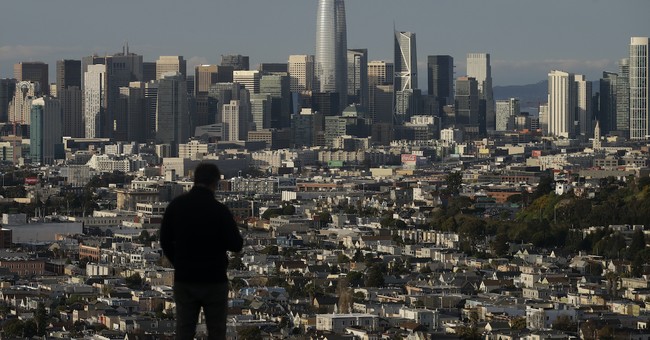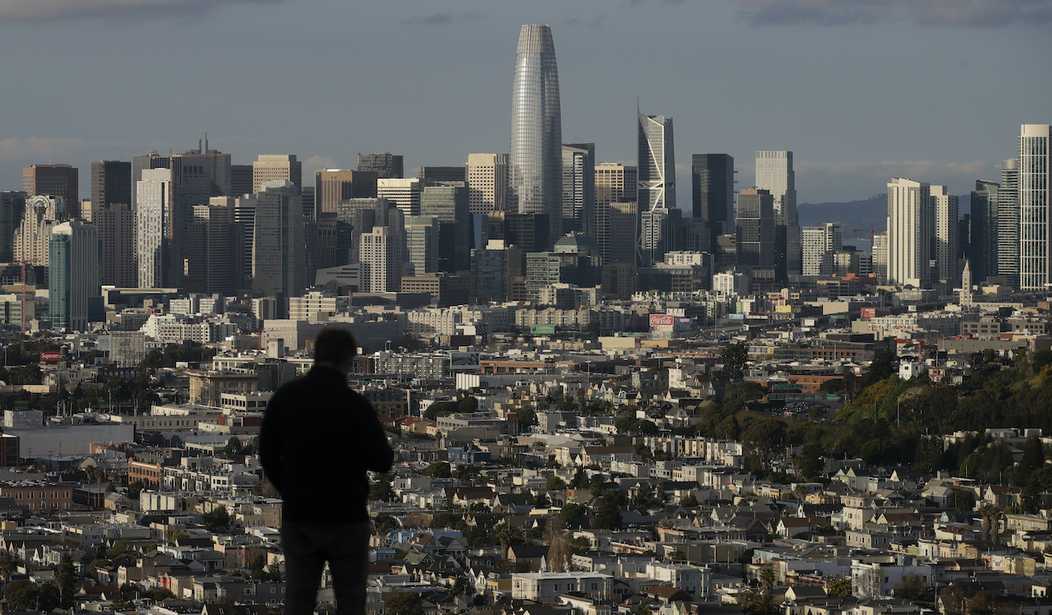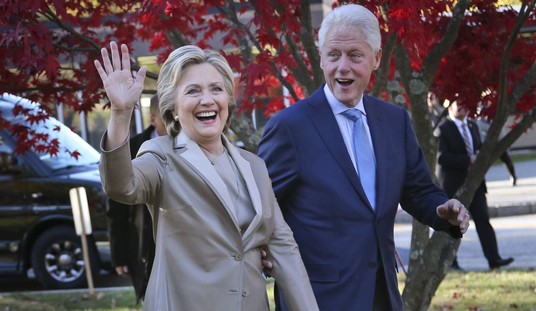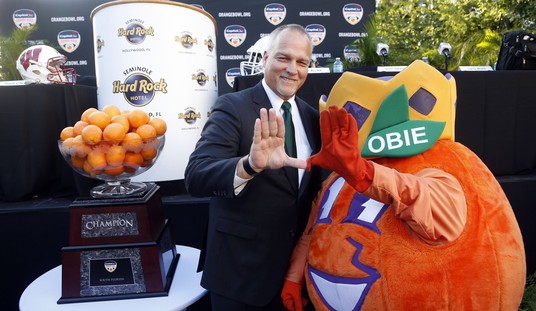
A man looks toward the skyline from Bernal Heights Hill in San Francisco, Monday, March 16, 2020. Officials in six San Francisco Bay Area counties issued a shelter-in-place mandate Monday affecting nearly 7 million people, including the city of San Francisco itself. The order says residents must stay inside and venture out only for necessities for three weeks starting Tuesday in a desperate attempt by officials to curb the spread of the novel coronavirus. (AP Photo/Jeff Chiu)
California has had lower-than-expected coronavirus case numbers during the current pandemic, and one hypothesis has been that the illness started spreading in the state in the fall of 2019, much earlier than previously thought.
The country’s first statewide stay-at-home order went into effect at midnight on March 18, three days earlier than New York state’s, but since the number of Californians requiring hospitalization has been far lower than forecast the state lent 500 ventilators back to the national stockpile (100 of which went to New York state) earlier this week.
Why is that? KSBW reports:
Researchers at Stanford Medicine are working to find out what proportion of Californians have already had COVID-19. The new study could help policymakers make more informed decisions during the coronavirus pandemic.
The team tested 3,200 people at three Bay Area locations on Saturday using an antibody test for COVID-19 and expect to release results in the coming weeks. The data could help to prove COVID-19 arrived undetected in California much earlier than previously thought.
Hanson said he thinks it is possible COVID-19 has been spreading among Californians since the fall when doctors reported an early flu season in the state. During that same time, California was welcoming as many as 8,000 Chinese nationals daily into our airports. Some of those visitors even arriving on direct flights from Wuhan, the epicenter of the coronavirus outbreak in China.
“When you add it all up it would be naïve to think that California did not have some exposure,” said Hanson.
For years California has been the No. 1 travel destination for Chinese tourists in the United States. Even after the U.S. halted flights from China this winter Chinese travelers were still able to come to California on flights from Europe and Canada.
Science Magazine talked to Michael Busch, a transfusion specialist based at the University of California, San Francisco (UCSF), who has studied human blood infections caused by every imaginable virus. Busch directs the Vitalant Research Institute, a nonprofit that’s world renowned for its infectious disease studies, about the serosurveys Stanford researchers are participating in:
The best way to figure out how far and wide the virus has spread in a population is to look at blood. Antibodies, blood proteins that the immune system produces to attack pathogens, are viral fingerprints that remain long after infections are cleared. Sensitive tests can detect them even in people who never felt a single symptom of COVID-19.
The World Health Organization has announced an ambitious global effort, called Solidarity II, of so-called serosurveys, studies that look for antibodies to SARS-CoV-2 in the population.
The United States has launched an unprecedented effort as well. One serosurvey is already underway in six metropolitan areas, including New York City, the hardest hit city in the United States. A second, even larger one, is on its heels, and together they should give a strong nationwide effort to track closely how many Americans have become infected as the pandemic unfolds. Serosurveys may also help efforts to develop vaccines, and, separately attempts to devise therapies to stop the virus from causing harm.
Antibody testing wouldn’t pick people up in the earliest stages of infection who had asymptomatic infections, but the data are becoming very solid that within 4 to 5 days of earliest disease onset, antibodies are detectable. So if you really want to pick up acute infections, you need to add serology to nucleic acid testing.
With support from the U.S. Centers for Disease Control and Prevention [CDC], we’ll conduct three national, fully representative serosurveys of the U.S. population using the blood donors. That will be 50,000 donations in September and December of 2020 and November of 2021. We’re going to be estimating overall antibody prevalence to SARS-CoV-2 within each state, but also map it down within the states to regions and metropolitan urban areas, and look at the differences.
Dr. Busch told the magazine that they have results for Seattle for March and that next week they will have the results for New York City for the last week of March. Given that they’ve also added Los Angeles, the results of this study and the Stanford study should give a healthy insight into exactly when the Wuhan coronavirus first hit the Golden State.













Join the conversation as a VIP Member